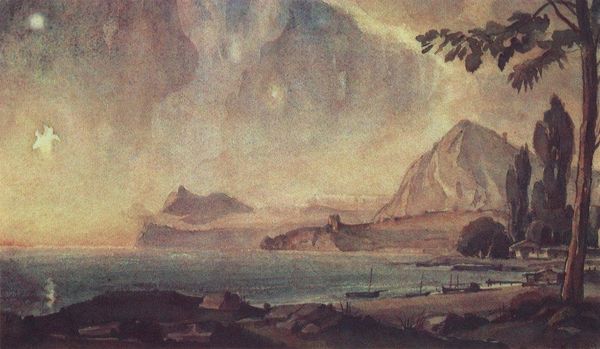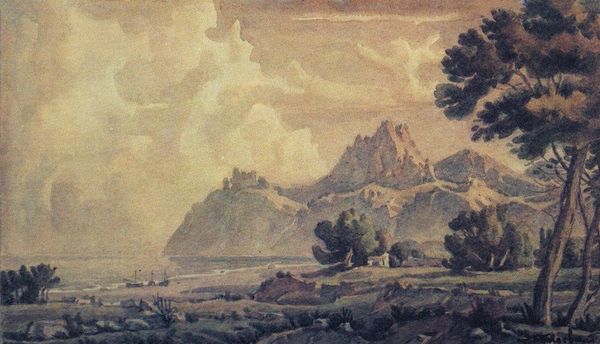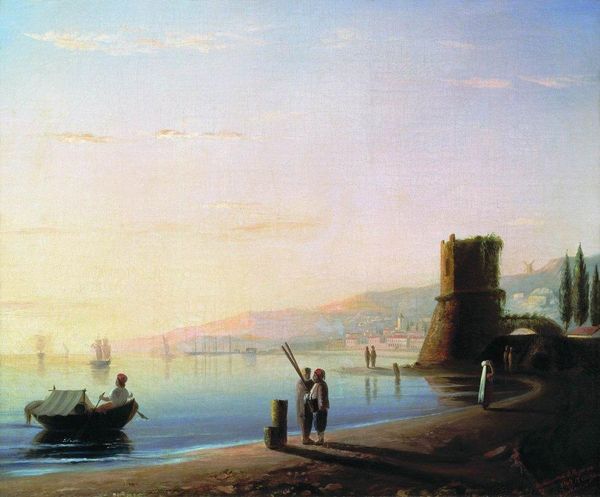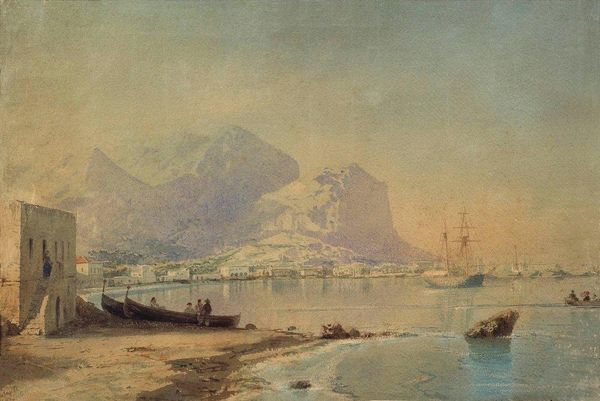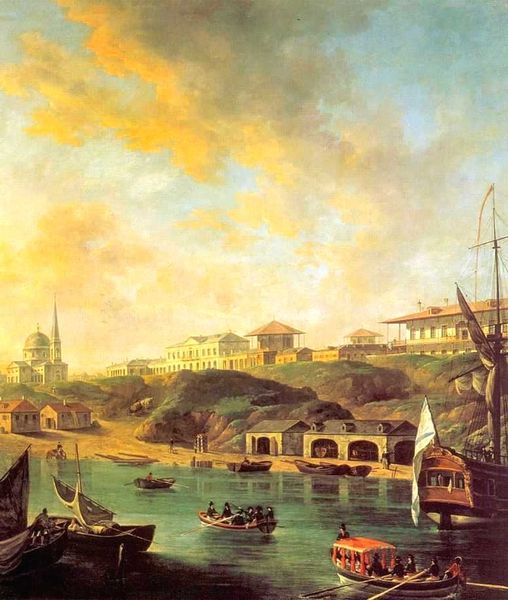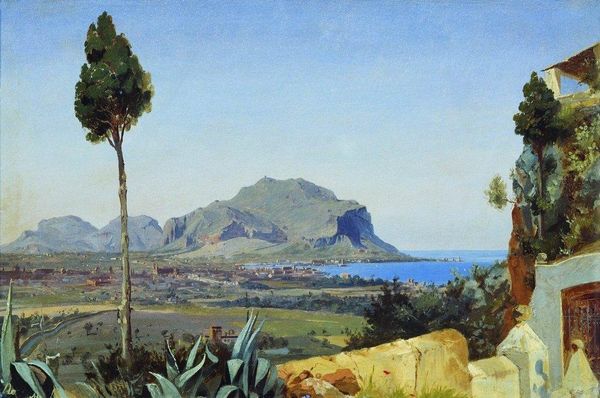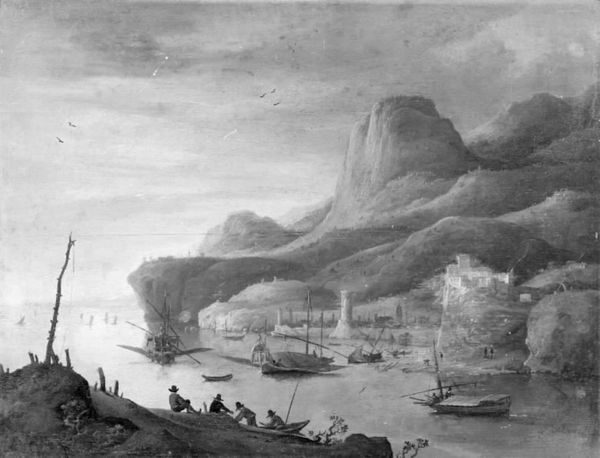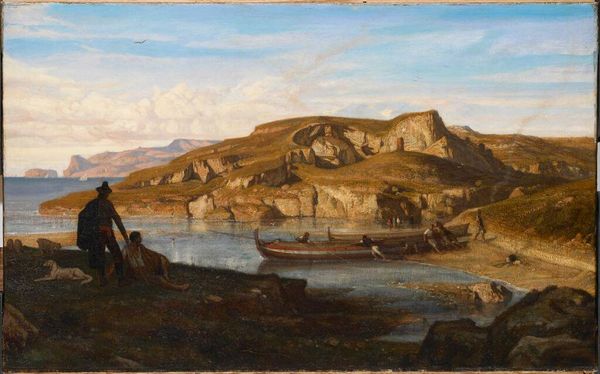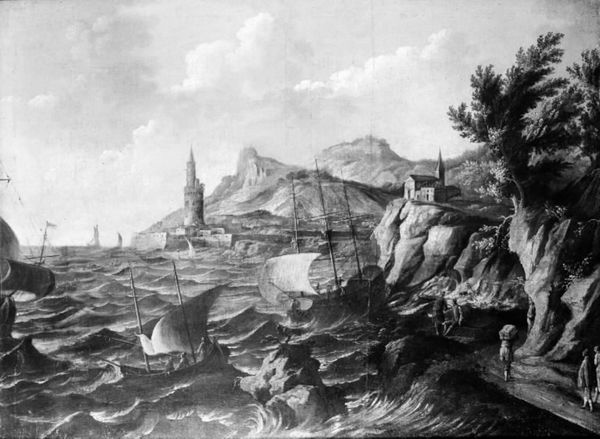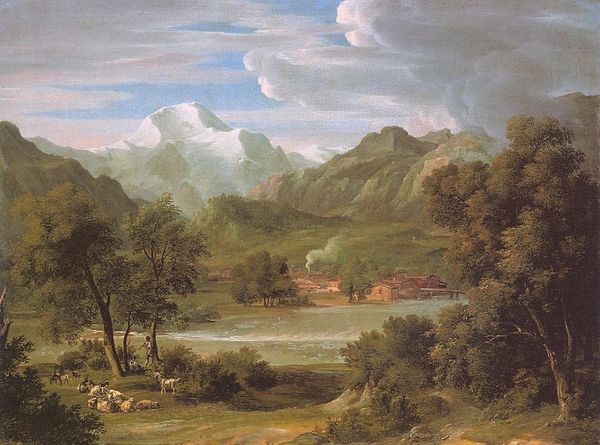
Copyright: Public domain
Curator: My initial impression is one of a sort of wistful timelessness. It’s calm, maybe a bit melancholic. Editor: Well, that feeling aligns somewhat with the subject, doesn’t it? What you’re looking at is Konstantin Bogaevsky’s "Kaffa (Old Feodosia)," completed in 1927. This oil painting, currently housed in the Tretyakov Gallery in Moscow, depicts the Crimean city with echoes of its long history. Curator: The architecture seems to blend so many eras. And the way he’s rendered the clouds – they’re almost biblical, looming over the city like watchful deities or perhaps even a looming threat. Editor: Indeed, and this intersection of eras is characteristic of Bogaevsky’s artistic project. He creates what some scholars have termed ‘historical landscapes,’ that serve less as straightforward depictions and more as meditations on the cyclical nature of history, rise and fall of empires and societies. He blends reality with an almost mythical vision of the past. Look at how he includes symbols of different periods, superimposing Greek ruins atop medieval fortifications for instance. Curator: So it’s not simply romanticizing the past. There's almost a premonition of doom in those imposing cloud formations and in the slightly desaturated colour palette. The past isn't something beautiful to return to; it's a burden, an inescapable part of identity. The figures are absent and buildings stand as witness, burdened. Editor: Exactly. I agree with that. It avoids pure idealization, nodding toward a heavier and inescapable legacy. The buildings take on an almost anthropomorphic quality here, silent witnesses as you’ve said. Bogaevsky was painting this not long after the Russian Revolution; the themes of destruction and regeneration would likely have resonated deeply within that context. His work carries that weight, reflecting the precariousness of any present. Curator: Understanding the socio-political context of its making certainly offers new insights. These buildings carry so much history— it almost seeps out of the canvas! Editor: It does. And by extension, prompts to recognize the forces, historical, political, and personal, that continuously mold and reshape our present as well. Curator: Yes, a quiet painting that shouts volumes about historical and societal flux! Editor: Agreed! It really urges us to remember, reflect, and examine our shared continuities.
Comments
No comments
Be the first to comment and join the conversation on the ultimate creative platform.
